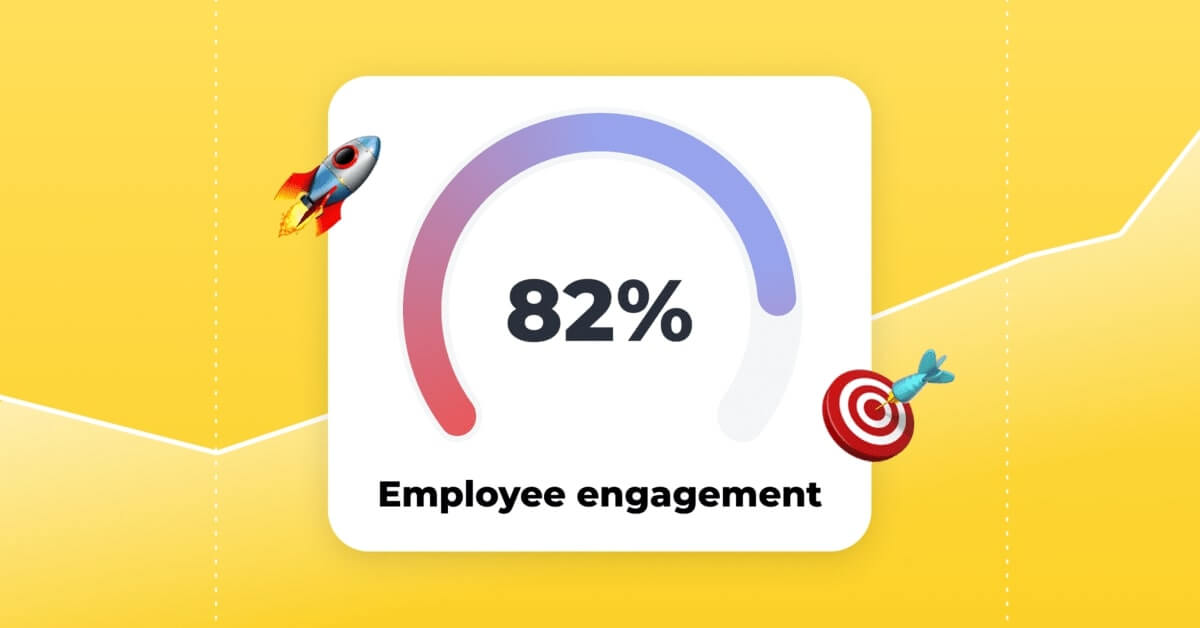
Featured
6-step knowledge management process for businesses in 2024

7 mins read
Start building your digital home with Happeo
Request a demoFeatured
Product
Features
Solutions
Happeo for
Use cases
Resources
Explore
Support
Happeo For
Use cases
Comparisons
Explore
Support
Recent

Jonathan Davies
7 mins read
In business, “knowledge” can mean passwords, documents, or an employee’s recollection of a client conversation.
Knowledge often is scattered across an organization, stored in different formats, and prone to redundancy, and employees may be unaware of knowledge that could help them in their day-to-day work.
The challenge for business leaders is how to locate and organize all of their company’s knowledge. It’s a daunting task, but not impossible.
In this post, we’ll talk about the knowledge management process — what it is, what it entails, and its benefits. Let’s begin!
The knowledge management process is the discovery, capture, organization, and sharing of knowledge. Each step in the process may involve multiple smaller steps — for example, capturing knowledge may require an audit of digital files, interviews with different departments, and a review of any documents not stored in a digital format.
Once all knowledge is accounted for and organized, the next phase is thinking about how to ensure everyone has access to relevant information and how employees can collaborate and expand upon existing knowledge.

“A user friendly, customizable platform for communication and shared work spaces. Easy to create a customized internal platform for company communications, news, and resources for employee needs through pre-built templates”
Davindra Basdeo
Senior Operations Coordinator
While knowledge may exist in numerous formats, it falls into one of two main categories: explicit and implicit knowledge.
This type of knowledge is well known and documented, such as a company’s mission statement, an employee handbook, or the passcode for a main entry door.
This type of knowledge might include an employee’s notes stored on a hard drive, or knowledge that exists only in someone’s head, such as the name of a local delivery driver. Generally, people spearheading the knowledge management process will need to devote more time to discovering implicit knowledge than explicit knowledge.
Now that we’ve provided a high-level view of the knowledge management process, let’s look at the six main knowledge management process steps.
This step varies, depending on the nature of a business. It may involve reviewing data from a CRM or project management platform, as well as conducting a company-wide audit of knowledge. That could include policies, forms, login credentials, as well as any information employees know but haven’t documented.
During the acquisition process, instead of asking teams to share knowledge that might be unknown to others, it may be helpful to ask teams what they don’t know about processes, hierarchy, and other departments. For example, you might ask a marketing team:
This is the review of how and where knowledge is stored — for example, on hard drives, in the cloud, or in a company intranet. For companies that have been around for decades, knowledge storage might also be file boxes or physical archives.
3. Knowledge review
Not all knowledge is relevant, and that’s what the review process is for: to weed out any outdated or unnecessary information, such as business records that are more than 7 years old. And when you use a knowledge management platform, the lifecycle management feature will automatically archive outdated information.
4. Knowledge distribution
This step involves looking at how collective knowledge is shared. For example, some companies share knowledge in email blasts, while knowledge-sharing within teams may occur in less formal channels, like messaging platforms. As you start using knowledge management software, you can measure which methods of distribution are most helpful for employees.
5. Knowledge expansion
When information silos exist within a company, teams may have some — but not all — of the knowledge they need. Knowledge expansion is the process of bringing employees and teams together to collaborate on or contribute to any knowledge that’s been gathered, to ensure it’s complete and accurate.
6. Knowledge tracking
This is the process of analyzing how knowledge is accessed, shared, and used. Typically, it’s easier to execute this process when using a knowledge management platform that includes analytics about user engagement.
When you implement a knowledge management process, you can:
Once knowledge is organized and accessible, employees can feel empowered to find answers to their own questions, rather than asking for help. That may mean fewer inquiries for IT teams, HR reps, and managers.
With knowledge that is well organized and easy to access, employees may be able to focus more on collaboration, instead of wasting time searching for information.
The previously undocumented knowledge gathered in the acquisition process becomes part of the company — you won’t have to worry about losing it when a longtime employee leaves.
The best decisions are those based on relevant information, so the knowledge management process helps people make educated decisions. Furthermore, knowledge management platforms give managers and administrators access to an array of data that can help guide decisions.
A knowledge management platform with a detailed search function lets employees quickly find the information they need, which in turn increases productivity. A searchable company directory also improves productivity, as employees can easily find and contact people when they need information.
Employees appreciate transparency, which means the organization and dissemination of knowledge can boost employee satisfaction. A knowledge management platform with a social component may also help employees feel happier at work.
Small companies might not see a need to set up a strong knowledge management process, but as a company grows, knowledge can easily become lost. A knowledge management process keeps information organized, even during periods of rapid growth.
The knowledge management process is well worth the effort. You can increase efficiency, break down silos, and boost satisfaction throughout the organization. Plus, some knowledge management platforms — like Happeo — include a social component that greatly improves engagement, especially for remote teams.
With Happeo, employees can:
Search across departments and workspaces:
Happeo’s Universal Search lets users search within Happeo for knowledge stored in the platform, as well as any information in Google Drive, OneDrive, and SharePoint.
With the Federated Search add-on, users can find information in any integrated app or platform.
Find subject matter experts:
Happeo lets companies create branded directories, with contact cards for every employee. That means employees can easily find the best contact to answer a question, and even access their calendar to schedule a meeting.
Collaborate and communicate:
With Happeo, employees can post updates, share items, and comment on or react to other content. This functionality helps teams feel connected, even when working from different locations.
Integrate existing workspaces:
Happeo integrates with popular platforms and workspaces, and with its range of features, it may eliminate the need for some subscription-based software.
Ready to see how knowledge management can improve your business? Schedule your Happeo demo now!
